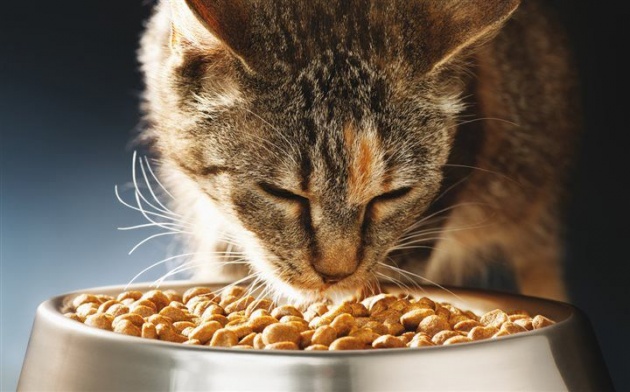
(BPT) - The most recent data from the Centers for Disease Control and Prevention shows that more than one-third, or 78.6 million, of U.S. adults are obese. While the issue is well-recognized among the public, many don't realize there is a second obesity epidemic occurring simultaneously - a pet obesity epidemic, which is even more severe.
Research from the Association for Pet Obesity Prevention shows an estimated 52.6 percent of dogs and 57.6 percent of cats in the U.S. are overweight or obese. These numbers are at an all-time high, according to the Banfield Report, which says that 37 percent more dogs and 90 percent more cats are obese today than just five years ago.
So how do you know if your pet is overweight or obese? Pet360.com contributor Patrick Mahoney, VMD, points to the following signs to look out for:
* Excess fat covering the ribs - A thick layer of fat inhibits easy feeling of the ribs.
* Lack of a waistline - When looking down on your pet from above, there is a lack of visible narrowing just behind the last rib.
* Pendulous abdominal fat - Fatty tissue dangles from the underside of your pet's abdomen, which may even swing while your pet is walking or running.
Just like with people, obesity can lead to other health complications in pets. Veterinarian and pet health expert Dr. Jennifer Coates notes that overweight pets are at an increased risk for multiple health conditions, including ligament ruptures, intervertebral disk disease, osteoarthritis, congestive heart failure, dermatological disorders, infections, heat exhaustion and heat stroke, as well as complications during surgery and some types of cancer.
"The complications that can arise from obesity in pets are just as detrimental to their health as for people who are obese," says Dr. Ellen Lowery, associate director of U.S. Veterinary and Professional Affairs at Hill's Pet Nutrition, which manufactures Hill's Prescription Diet Metabolic Advanced Weight Solution. The specialized line of products work together to ensure safe and healthy weight loss and easy weight maintenance, and is available alongside other pet food options from Hill's. "Pet parents should consult with their veterinary healthcare team to first determine whether their pet is in its ideal weight range, and if not, what the best weight management strategy should be to support a longer, healthier and happier life."
One tool that vets can use to conduct a pet weight assessment is the Hill's Healthy Weight Protocol, which was developed by Hill's and the University of Tennessee for veterinary professionals to more accurately determine an estimated ideal body weight for overweight pets. It is also used to calculate the best range of caloric intake for a weight-loss program. The calculator allows the veterinary healthcare team to create a feeding and monitoring plan that is simple for pet owners to follow. Additional tools, such as PetMD's Healthy Weight Calculator, can help pet parents learn about proper weight management and key questions to ask their veterinarian.
Pet parents should commit to a daily exercise schedule that provides consistent activities for their pets. For dogs, workouts could include a brisk walk outdoors or a game of fetch. As much as cats enjoy their snooze time they can still get in some exercise through toys and games.
It's important to also pay attention to the feeding guidelines on pet food packaging, which are intended to instruct on the proper feeding portions for pets in certain weight ranges. This, of course, is a general recommendation and should be modified to reflect your pet's daily activity level as well as any extra calories he is getting from treats, which should be no more than 10 percent of the pet's total calories for the day. Your veterinarian can help determine how many calories your pet should be given daily and how many calories they can receive in treats.
Therapeutic pet foods, typically available through your vet, are also an option for healthy weight loss and management. The Hill's Prescription Diet Metabolic Advanced Weight Solution for instance, works with each pet's unique metabolism to deliver the right amount of essential nutrients your pet needs while keeping them full and satisfied between meals. In real-world testing with pet owners and their pets at home, 88 percent of pets lost weight over two months.
Pet parents should think of their pets' health in the same way they view their own and incorporate nutritious food and physical activity into their daily routine for healthy weight management.



